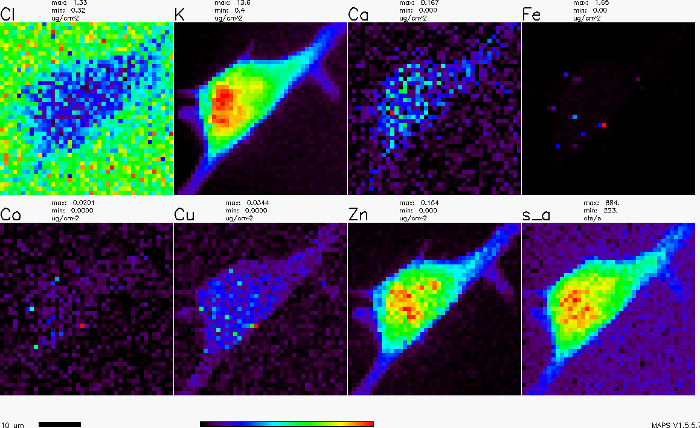X 射线荧光光谱 (XRF)
Overview
资料来源: 实验室博士丽迪雅芬尼 — — 阿贡国家实验室
X 射线荧光是诱导、 发出的辐射,可以用来产生光谱信息。X 射线荧光显微术是一种非破坏性的成像技术,使用金属诱导的荧光发射来识别和量化及其空间分布。
Procedure
1.制备硅氮化 Windows
- 使用反向镊子拿起一个窗口 (windows 会粉碎如果下降的氮化硅)。
- 将窗口拖到玻璃片上,平的一面朝上。
- 坚持小块的透明胶带两侧的窗口,并使用这些坚持到培养皿的底部窗口。
- 消毒与紫外线辐射的培养皿中的窗口。这可以通过自动交联设置对紫外交联内阁,其后进一步 UV 照射下 UV 灯在层流罩约 1 小时。
2.镀上消毒的硅氮化 Windows 细胞
- 握住这道菜,它在约 45 ° 角倾斜。
- 添加媒体吹打的这道菜的一面和慢慢地减轻大衣与媒体窗口的倾斜角度。
- 以同样的方式,向培养皿,添加单元格和孵化。
- 观察偶尔使用光学显微镜来确定当他们准备好要使用的单元格。
3.固定和干燥的细胞
- 在层流罩、 温柔抽吸时倾斜这道菜,如上文所述删除媒体。
- 添加 PBS,按住它在角吹打的这道
Results
Application and Summary
Tags
X ray FluorescenceXRF SpectroscopyElemental AnalysisNon destructive TechniqueRoom Temperature AnalysisBiological SamplesForensic SamplesEnvironmental SamplesWorks Of ArtPowdersCrystalsLiquidsFluorescent RadiationFluorescence TechniqueX ray PhotonsInner Shell ElectronsSecondary Photon EmissionElement Identification
跳至...
此集合中的视频:

Now Playing
X 射线荧光光谱 (XRF)
Analytical Chemistry
25.4K Views

分析制备的样品制备
Analytical Chemistry
84.8K Views

内部标准
Analytical Chemistry
204.8K Views

标准加入的方法
Analytical Chemistry
320.2K Views

校准曲线
Analytical Chemistry
797.0K Views

(紫外-可见) 的紫外-可见光谱法
Analytical Chemistry
623.7K Views

拉曼光谱化学分析
Analytical Chemistry
51.2K Views

气相色谱 (GC) 与火焰电离检测
Analytical Chemistry
282.1K Views

高性能液相色谱法 (HPLC)
Analytical Chemistry
384.6K Views

离子交换色谱法
Analytical Chemistry
264.6K Views

毛细管电泳 (CE)
Analytical Chemistry
94.0K Views

质谱分析法导论
Analytical Chemistry
112.3K Views

扫描电子显微镜 (SEM)
Analytical Chemistry
87.2K Views

负载型催化剂,用恒电位仪/结合电化学测量
Analytical Chemistry
51.4K Views

循环伏安法 (CV)
Analytical Chemistry
125.3K Views
版权所属 © 2025 MyJoVE 公司版权所有,本公司不涉及任何医疗业务和医疗服务。
